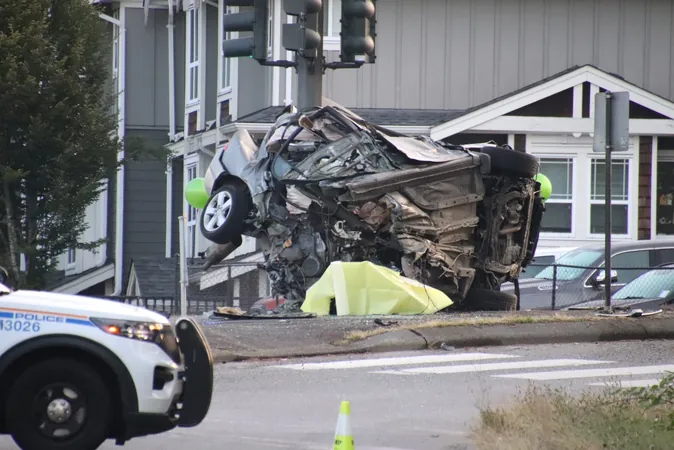
Revolutionary Earthquake Research: Scientists Illuminate the Secrets Behind Quake Ruptures
2025-06-08
Author: Olivia
Shedding Light on Earthquake Mechanics
In an exciting breakthrough, scientists have unlocked a crucial understanding of earthquake mechanics, essentially peering into the fault lines where seismic events originate. Sylvain Barbot, an associate professor at USC Dornsife, emphasized this significance: "By observing how fault surfaces interact throughout the earthquake cycle, we can finally explain the gradual accumulation of stress on faults that leads to sudden ruptures. This could pave the way for innovative methods to monitor and predict earthquakes at their nascent stages."
Understanding the Hidden Dynamics of Faults
Historically, researchers depended on simplified mathematical models to describe earthquake behavior, often falling short of capturing the complex physics involved. Barbot notes the simplicity yet profundity of their latest finding: when rough surfaces slide, they only connect at tiny, isolated points, constituting a minute fraction of the entire surface area. This 'real area of contact'—though not visible to the naked eye—is pivotal in understanding earthquake dynamics.
Real-Time Laboratory Earthquakes
In a groundbreaking study, researchers employed transparent acrylic materials to visualize earthquake ruptures as they happened. Through high-speed cameras and advanced optical techniques, they monitored changes in LED light transmission as fault contact points formed, expanded, and eventually failed during lab-generated earthquakes.
"Watching the contact area shift during these ruptures is astonishing," Barbot remarked. "In mere milliseconds during rapid ruptures, we observed about 30% of the contact area vanish—this dramatic loss fosters the very earthquake itself."
From Simulations to Predictive Insights
Investigating 26 varied simulated earthquake scenarios, the team uncovered that the relationship between rupture velocity and fracture energy aligns with established principles of linear elastic fracture mechanics. Their simulations adeptly replicated both slow and fast earthquakes, mirroring key elements such as rupture speeds and stress reductions alongside variations in light transmission across fault lines.
Implications for Earthquake Monitoring and Prediction
The team’s findings hold promise not just for scientific exploration but for real-world applications. Continuous monitoring of the physical state of fault contacts could be a monumental advance in short-term earthquake monitoring systems, enhancing the reliability of predictions based on the electric conductivity of fault zones. Barbot suggested, "If we can continuously track these changes in natural faults, we may identify the early warning signs of earthquakes long before seismic waves are unleashed."
Looking Forward: A New Era of Earthquake Prediction
As scientists look ahead, Barbot expressed enthusiasm for applying their findings beyond controlled laboratory settings. This research lays a crucial foundation for understanding how fault characteristics evolve throughout seismic cycles. " envision a world where we can detect minute shifts in fault conditions prior to an earthquake event," he concluded, highlighting the long-term implications of their groundbreaking work.
Research Backing
This remarkable study involved contributions from Barbot and Baoning Wu, now at the University of California, San Diego. It was made possible through funding from the National Science Foundation and California's Statewide Earthquake Center.









 Brasil (PT)
Brasil (PT)
 Canada (EN)
Canada (EN)
 Chile (ES)
Chile (ES)
 Česko (CS)
Česko (CS)
 대한민국 (KO)
대한민국 (KO)
 España (ES)
España (ES)
 France (FR)
France (FR)
 Hong Kong (EN)
Hong Kong (EN)
 Italia (IT)
Italia (IT)
 日本 (JA)
日本 (JA)
 Magyarország (HU)
Magyarország (HU)
 Norge (NO)
Norge (NO)
 Polska (PL)
Polska (PL)
 Schweiz (DE)
Schweiz (DE)
 Singapore (EN)
Singapore (EN)
 Sverige (SV)
Sverige (SV)
 Suomi (FI)
Suomi (FI)
 Türkiye (TR)
Türkiye (TR)
 الإمارات العربية المتحدة (AR)
الإمارات العربية المتحدة (AR)